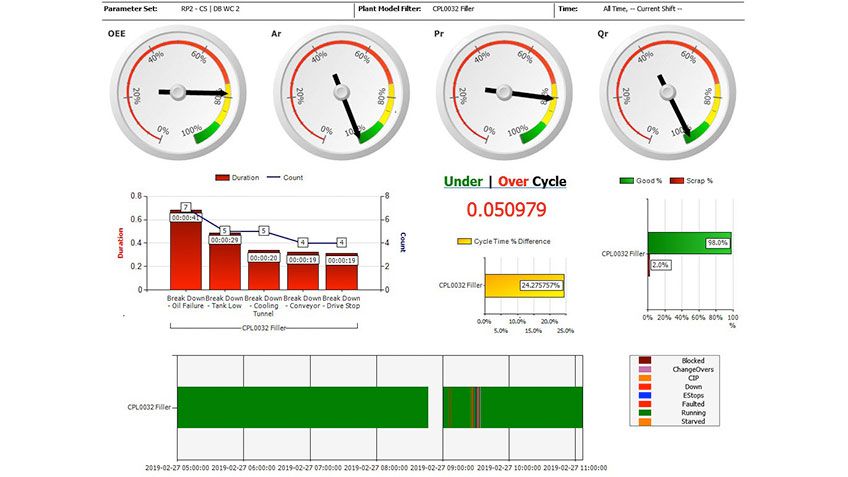Organization for identifying growth opportunities
Understanding OEE helps improve productivity goals by organizing the data relevant to facility performance. The value of a performance dashboard, after all, is the transparency it provides into operations.
The first step toward making dashboard data meaningful requires teams to consider how they’re calculating OEE. Dashboards simplify this effort by packaging data from various sources into one tidy package. Not only does the dashboard make data accessible, it also provides more than mere calculations and organizes the data in graphs and charts. These layouts make insights more visible and actionable.
With a consistent collection of data, users can use current OEE benchmarks to set downtime elimination goals and to monitor performance improvements over time. For production managers, it’s important to know the total amount of time a machine is down and repair time.
How to solve performance problems
Performance dashboards help users accomplish more in less time by providing the OEE information users need to determine whether their plant is as productive as it could be. What does a performance dashboard look like? Layouts vary, but we’ve learned users benefit most when OEE is broken down by availability (Ar), performance (Pr) and quality (Qr).
Not all performance dashboards provide segmented measurements, so if you want a cohesive view of OEE, it’s important to find one that offers this capability. A comprehensive view helps to ensure all three elements of OEE are detailed.
For example, if you’re only monitoring quality, your production will likely suffer because you’re too focused on maintaining high quality. But a focus on quality can result in running machines slower, decreasing productivity. Since every facility has production goals, slower production can result in operators working during the weekend when machines are normally scheduled for maintenance. The unintended consequences can go on and on.
Meanwhile, operations managers can use performance dashboards to keep a close eye on OEE. When they notice OEE is suffering, the manager will likely call up the production manager and ask why the machines aren’t running at capacity. From there, the product manager will go out and solve the performance problem by collecting data, increasing to max capacity, collecting more data, and checking for trends and insights. This process increases collaboration and helps the team achieve peak performance.




